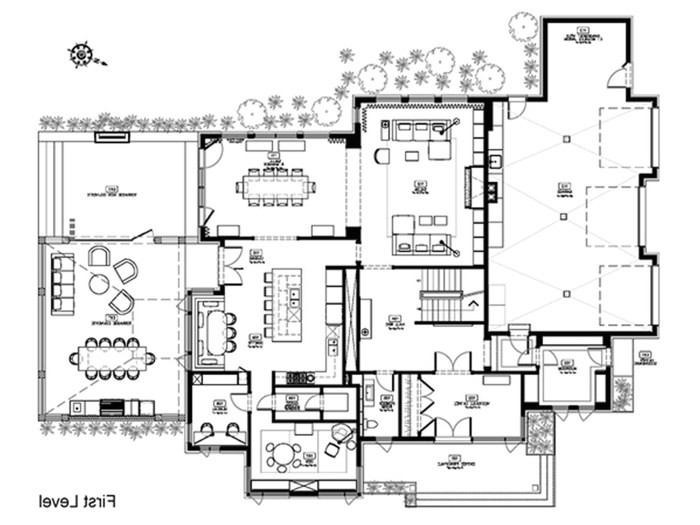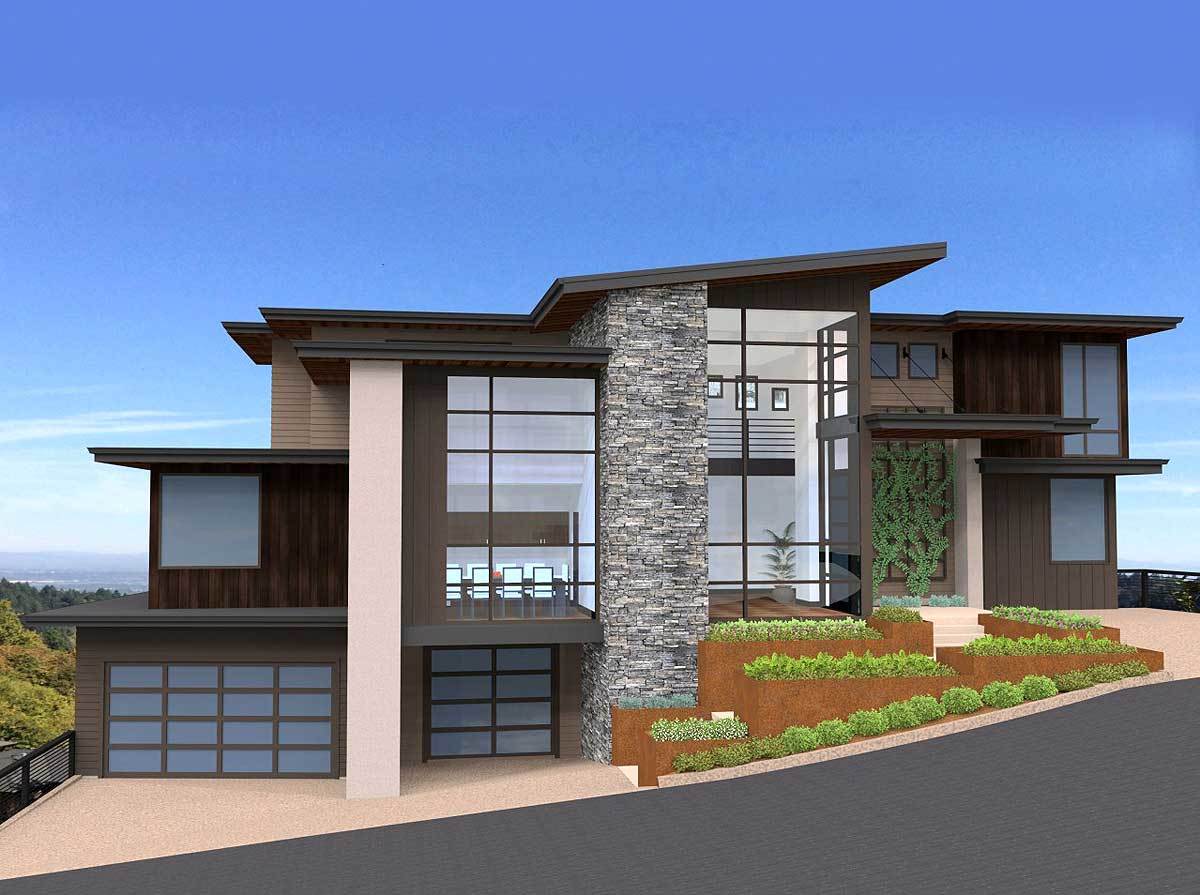Crafting Unique Architectural Designs House Plans
Architectural designs house plans lay the foundation for an exciting journey, offering a peek into a world filled with intricate details and originality. From the importance of architectural designs to the impact of technology, this topic dives deep into the art and science of creating dream homes.
As we unravel the layers of architectural designs house plans, we uncover the key components that shape living spaces, explore different styles, and embrace the fusion of artistry and functionality.
Architectural Designs House Plans
Importance of Architectural Designs
Architectural designs play a crucial role in house plans as they determine the overall look, feel, and functionality of a living space. A well-thought-out design can maximize space utilization, enhance natural lighting, and create a harmonious flow throughout the home.
Unique Architectural Elements
Some unique architectural elements that can enhance a house plan include:
- Skylights: Adding skylights can bring in natural light and create a sense of openness in the space.
- Cantilevered structures: Incorporating cantilevered elements can add a modern and visually striking touch to the design.
- Green roofs: Implementing a green roof can not only provide insulation but also promote sustainability and environmental consciousness.
Functionality of Living Space
Architectural designs have a significant impact on the functionality of a living space. Features such as open floor plans, strategically placed windows, and efficient storage solutions can greatly improve the usability and comfort of a home. A well-designed space can also enhance the overall quality of life for its inhabitants.
Key Components of Architectural Designs
When it comes to architectural designs for house plans, there are several key components that should be carefully considered to ensure functionality, aesthetics, and sustainability.
Natural Light
Natural light plays a crucial role in architectural designs as it not only enhances the overall ambiance of a space but also has a significant impact on the layout of the house plans. Maximizing natural light through strategic placement of windows, skylights, and other openings can help reduce the need for artificial lighting during the day, leading to energy savings and a more sustainable living environment.
Sustainable Materials and Energy-Efficient Features
In modern architectural designs, the use of sustainable materials and incorporation of energy-efficient features are becoming increasingly important. Sustainable materials, such as recycled wood, bamboo, and concrete, not only reduce the environmental impact of construction but also promote healthier indoor air quality.
Energy-efficient features, including solar panels, insulation, and smart home technologies, can help lower utility bills and minimize the carbon footprint of the house.
Types of Architectural Styles
When it comes to architectural styles in house plans, there are several distinct options to choose from. Each style has its own unique characteristics that influence the overall look and feel of a home.
Modern Architectural Style
The modern architectural style is known for its clean lines, open floor plans, and large windows that allow for plenty of natural light. This style often incorporates materials such as steel, glass, and concrete to create a sleek and minimalist look.
Traditional Architectural Style
In contrast, the traditional architectural style is characterized by classic elements such as pitched roofs, dormer windows, and intricate detailing. This style often features warm, inviting spaces with a focus on symmetry and craftsmanship.
Minimalist Architectural Style
The minimalist architectural style is all about simplicity and functionality. This style emphasizes clean, uncluttered spaces with a focus on basic geometric forms and a limited color palette. Minimalist homes often feature sleek finishes and an emphasis on natural materials.
Contemporary Architectural Style
The contemporary architectural style is a blend of modern and traditional elements. This style often incorporates innovative design concepts and materials to create a unique and cutting-edge look. Contemporary homes may feature asymmetrical facades, mixed materials, and a focus on sustainable design principles.
Incorporating Technology in Architectural Designs

Technology is playing a crucial role in revolutionizing architectural designs for house plans. From 3D modeling to virtual reality, these advancements are changing the way architects visualize and create living spaces.
3D Modeling and Virtual Reality
3D modeling allows architects to create detailed and realistic representations of their designs. This technology enables clients to better understand the layout and aesthetics of a house plan before construction even begins. On the other hand, virtual reality takes it a step further by immersing clients in a virtual tour of the space, providing a more interactive and engaging experience.
Smart Home Technology
- Smart home technology allows for the integration of devices and systems that enhance comfort, convenience, and energy efficiency within a house plan.
- Features such as automated lighting, temperature control, security systems, and entertainment systems can all be seamlessly incorporated into the design.
- This technology not only improves the overall functionality of the space but also adds a modern and luxurious touch to the house plan.
Optimizing Space and Functionality
Technology is being used in innovative ways to optimize space and functionality in house plans. For example, architects can utilize software to analyze and maximize natural light exposure, airflow, and energy efficiency within a design.
End of Discussion

In conclusion, architectural designs house plans serve as the blueprint for turning visions into reality. From sustainable materials to innovative technologies, every element plays a vital role in creating spaces that inspire and elevate everyday living. As we continue to evolve in design and technology, the possibilities for architectural designs house plans are endless, promising a future where creativity knows no bounds.
Popular Questions
What role do architectural designs play in house plans?
Architectural designs are essential in shaping the layout, aesthetics, and functionality of a house plan, ensuring that every space is thoughtfully crafted to meet the needs and desires of the inhabitants.
How does natural light impact architectural designs?
Natural light is a key element in architectural designs as it enhances the ambiance of a space, creates visual interest, and promotes energy efficiency by reducing the need for artificial lighting.
What are some examples of popular architectural styles?
Popular architectural styles include modern, traditional, minimalist, and many more, each with its unique characteristics that influence the overall look and feel of a house plan.
Why is incorporating technology important in architectural designs?
Technology such as 3D modeling and smart home features revolutionize architectural designs by offering innovative ways to optimize space, improve functionality, and create a more sustainable living environment.




